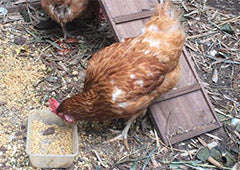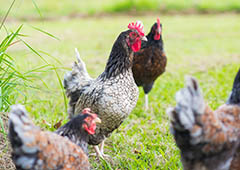Most of us have memories as kids sitting at the kitchen table listening to our parents tell us for the thousandth time to “eat your vegetables”. However, as time passes, most of us come round to eating our vegetables, as we are aware of the countless benefits they have for our health. Cauliflower especially is one of the world’s most nutrient dense vegetables readily available for us to enjoy. If you’re someone who has long admired cauliflower in all its various incarnations, or if you are curious yet cautious about giving this wondrous cousin of broccoli a try, make sure you give this article a read to find out more about this supremely nutritious vegetable.
What is cauliflower?
Cauliflower in many ways is similar to other extremely healthy vegetables, such as kale, cabbage and broccoli. It is a part of the ‘cruciferous vegetable family’ that also includes bok choy, radish and Brussels sprouts, which is characterised by the fact that these flowers have four petals that in some ways resemble a cross or crucifix. Cauliflower is incredibly dense in all types of nutrients, some of which have cancer preventing properties.
What is purple cauliflower?
Not surprisingly purple cauliflower is a lot of standard cauliflower with the exception of having beautiful vibrant violet colour. This purple tinge is evident due to the presence of a antioxidant known as anthocyanin, which can also be found in red cabbage, as well as at the bottom of a glass of red wine. Purple cauliflower has all the same health benefits and cancer fighting properties of regular cauliflower, with the added benefit of the extra antioxidant boost.
How does cauliflower help prevent cancer?
Cauliflower helps your body prevent cancer due to the fact that it helps reinforce your body’s natural detoxifying process and is high in antioxidants, as well as supporting anti-inflammation. If the body loses its balance by becoming overrun with toxins or is low in antioxidants, cells are more likely to become damaged or tired, opening a doorway for cancers to possibly develop. Cauliflower in particular is useful in the prevention of bladder, breast, colon, prostate and ovarian cancer.
What vitamins is cauliflower rich in?
Cauliflower is so beneficial in the maintenance of your body’s health due to the fact it is rich in essential vitamins, such as C and K, as well as being a dense source of fibre, manganese and antioxidants. All these components in turn help your body run at an optimum level if consumed alongside a healthy and balanced diet.
What parts of the cauliflower do I eat?
Traditionally most people will eat the cauliflower florets, which are essentially the white, bulbous parts of the plant. This being said, the stem as well as the leaves are also edible and rich in nutrients. If the stems or leaves don’t appeal make sure you either dump them into your compost bin or better yet toss them into your chicken coop – your girls will love munching on your leftover cauliflower treats.
How often should I eat cauliflower?
It is recommended that you eat cauliflower or other cruciferous plants approximately two to three times per week. In terms of serving size, it is recommended that you eat around about 1 ½ cups per serving. This being said, it is imperative that you prepare cauliflower in the right way, otherwise you may accidentally cook off some of the nutrients.
What is the best way to cook cauliflower?
Though most of us are accustomed to eating a couple of pieces of boiled cauliflower, alongside of plate of other steamed vegetables and perhaps a piece of meat – this however is not to best way to take advantage of the enormous health benefits of eating cauliflower. Steaming, boiling and roasting cauliflower is delicious, however it unfortunately cooks off a lot of the essential nutrients that your body thrives on. One of the most beneficial ways to cook your cauliflower is...
-
Add approximately 5 TBS of vegetable or chicken broth (or just plain water) to a stainless steel skillet.
-
Turn the heat on and wait for the broth or water to begin to bubble.
-
Add the cauliflower florets to skillet, alongside a little bit of turmeric.
-
Cover the skillet and let it cook for approximately 5 minutes.
-
Take the skillet off the heat, serve and enjoy.
Sautéing cauliflower with a little turmeric is an easy way to serve cauliflower that is both nutritious and most importantly delicious.
How do I pick the best quality cauliflower?
Picking the right cauliflower is as easy and feeling for the right avocado. It just requires patience, determination and a little bit of knowledge. Here is what you should look for when selecting the best quality cauliflower…
-
Check to see if the cauliflower has a dense, heavy and satiny stem.
-
Inspect that the leaves surrounding the florets are fresh and green.
-
Look for a cauliflower that appears tight and compact.
-
Warning signs for an inferior cauliflower include dark spots on the stems or leaves, as well as the presence of mildew.
It can sometimes be difficult to find a truly remarkable cauliflower in your standard grocery store, that’s why many people tend to buy from farmer’s markets, community gardens or even consider growing their own.
When is the best time to grow cauliflower?
It is best to plant regular cauliflower or purple cauliflower in the lead up to the winter months in Australia. April and May is the best time to sow your cauliflower seeds, as the temperatures slowly start to drop and the seedlings will be able to sap up all that cool Autumn rain. By the time winter comes comes your cauliflowers should be ripe and ready for you to enjoy in a nice warm winter soup.
What do I need to know about growing my own cauliflower?
If you have gardening experience, growing your own cauliflower will be a reasonably easy endeavour, there are just a few basic principles you will need to consider…
-
Like most plants, cauliflower is easily grown from a single seed
-
Cauliflower feeds in moist, compost enriched soil
-
If you are planting your cauliflower in a nursery bed, ensure that your sow the seeds 3cm deep and 8 cm apart from one another
-
Always ensure that the soil is moist during its 10 week growth period
-
Transplant the seedlings from the nursery bed once the plants have developed 4-6 healthy looking leaves. Once transplanted ensure each cauliflower is at least 75 cm apart from one another
Though more avid gardeners will have their own tips and hints, the basics for growing cauliflower is relatively simple. Ensuring that you have a healthy supply of chicken manure enriched compost is the perfect way to give your cauliflower crop a boost.

Fun ways to cook cauliflower?
Cauliflower has entered a renaissance recently with cooks, professional to amateur, finding all different ways to put a creative spin on how they prepare, cook and present this anything but boring vegetable. One popular trend at the moment is cauliflower pizza crust, which is a delicious and crispy as it sounds. All you need to do is simply process the cauliflower down into a fine purée, cook it in the microwave and pack it down flat onto a standard pizza tray. Top with all your favourite pizza toppings, like tomatoes, basil, oregano, and voilà - your cauliflower pizza is ready to go! But it doesn't stop there: cauliflower tacos, honey lime cauliflower "wings" and parmesan cauliflower bites. There has never been more reasons to eat your vegetables, especially if its cauliflower.

Top five ways to cook cauliflower:
Here are the top five ways to cook cauliflower to store in your memory banks...
- Cauliflower pizza crust
- Cauliflower tacos
- Honey and lime cauliflower wings
- Cauliflower fritters with garlic aioli
- Roasted cauliflower and basil soup
Cauliflower is truly an exceptional plant that is both egg-ceptionally good for you as well as being egg-stremely tasty. Whether you’re planting or buying your cauliflower make sure you get some on your lunch or dinner plate at least twice a week! Also, don’t let your chickens miss out though, be sure you treat them by leaving some cauliflower inside their Taj Mahal, Penthouse or Mansion coop.


















